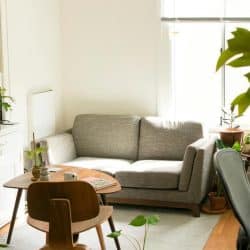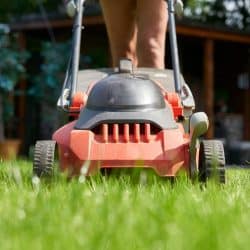
Let’s be real, tech isn’t just for the young and wired anymore. As homes get smarter, they’re also getting a lot more compassionate. Forget the image of smart homes being filled with robotic voices and blinking lights. Think comfort, security, and a little extra peace of mind.
For older adults, especially those hoping to stay independent longer, smart devices aren’t some fancy gimmick. They’re practical, empowering, and in many cases, life-changing.
Here’s a breakdown of the must-haves that blend modern convenience with everyday needs.
Voice-Controlled Smart Assistants

“Alexa, remind me to take my meds at 8.” Sounds simple, right? But for older adults, this kind of hands-free help can be a game-changer. Whether it’s setting reminders, playing favorite music, or just asking the weather before heading out, it’s all doable without lifting a finger.
And here’s the kicker: no need to navigate tiny screens or complicated apps. Just speak. For folks with arthritis, visual impairments, or mild memory lapses, that’s gold. Plus, there’s something oddly comforting about having a device that responds when spoken to, especially in a quiet home.
Smart Doorbell Cameras

Answering the door doesn’t have to involve struggling up from a recliner or peeking through the blinds. With smart doorbell cameras, you can see and talk to whoever’s outside right from a phone or tablet. It’s like having an eye on the porch even when you’re miles away.
They’re especially handy for solo dwellers or anyone with limited mobility. Got a delivery? No need to rush. Unexpected visitor? No pressure. It’s just amazing to be able to say, “I see you,” without actually being seen.
Automatic Medication Dispensers

Missed pills, double-doses, confusing labels. Sorting your medication can be quite a headache. But smart dispensers take the guesswork out of the routine. They release the right dose at the right time, often with an alert or chime that’s hard to ignore.
And let’s face it, everyone slips up sometimes. But for older adults, consistency can mean the difference between stability and a setback. These devices quietly become the unsung heroes of the daily routine, giving both the user and their family a little less to worry about.
Tech Without the Tech Headache

Here’s the thing. Not everyone wants to mess around with manuals, updates, or new apps every few weeks. And thankfully, most of these smart home gadgets are built with simplicity in mind. We’re talking big buttons, voice controls, and clear displays.
The goal isn’t to “learn” new tech. It’s to forget you’re using it at all. If it works quietly in the background and makes life smoother, that’s a win.
Smart Lighting Systems

Getting up in the middle of the night shouldn’t be a safety hazard. With smart lighting systems, motion sensors light the way automatically. No fumbling for switches or harsh glare. And during the day, lights can be adjusted with a tap or a timer.
Besides the safety factor (which is a big one), these lights can also save energy and help with bills without even trying. And yes, there’s something undeniably satisfying about lights that just seem to know when to turn on or off.
Fall Detection Sensors

No one likes to think about falling, but it’s one of the biggest risks for aging adults. Fall detection devices can alert family members or emergency services instantly, without needing to reach for a phone or press a panic button.
They’re discreet, often wearable, and just quietly there when needed. That kind of silent backup is the kind of reassurance you don’t realize you need until you really, really do.
Smart Thermostats

Comfort should be easy, not a guessing game with tiny buttons or confusing modes. Smart thermostats can learn preferences, be controlled remotely, and even adjust automatically to weather changes.
For someone on a fixed income, keeping heating and cooling bills in check without freezing or sweating it out is a big win. Plus, the ability to warm the room before getting out of bed? That’s living well.
Independence is Everything

There’s something powerful about not needing to ask for help. Even small wins like being able to adjust the thermostat or check who’s at the door add up. It’s not about avoiding people, it’s about choosing when and how to ask for help.
Smart tech lets older adults keep their independence just a little longer, and honestly, that freedom is worth more than any feature list.
Video Calling Devices

©Kateryna Hliznitsova/Unsplash.com
A baby monitor displaying a live feed of a baby, placed on a wooden table beside books.
Sometimes, a phone call just doesn’t cut it. Video calling devices, especially the ones designed for simplicity, make staying in touch a lot more personal. One button, and there’s the grandkids waving from across the country.
The emotional lift that comes from face-to-face connection is real. For older adults who may not get out as often, being able to see loved ones can make a home feel a whole lot less quiet.
Smart Plugs and Power Strips

Ever worry about whether you left the coffee pot on? Smart plugs have that covered. With a quick check on a phone, appliances can be turned off or scheduled to shut down automatically.
That means less risk of overheating or electrical fires. And it’s not just about safety. It’s about control. No more bending behind furniture to unplug something or triple-checking every outlet before bed.
Robotic Vacuum Cleaners

Let’s be honest. Vacuuming gets old, fast. For people with back or knee problems, it’s more than just a chore. It’s a challenge. Robotic vacuums take care of the daily dust patrol without complaint.
Set it, forget it, and come back to a clean floor. They might not get every nook and cranny, but they do enough to keep things tidy. And that’s often more than good enough.
Not Just for “Tech People” Anymore

It used to be that smart gadgets were for early adopters or tech geeks. Not anymore. These days, the smartest devices are also the simplest, and that’s by design.
Whether it’s a grandparent using video calls or someone managing arthritis pain with voice controls, the tech fits the life, not the other way around. That’s the shift that really matters.
Smart Leak Detectors

Water damage doesn’t announce itself politely. A small leak under the sink can turn into a huge, costly mess fast. Smart leak detectors catch problems early, often sending alerts before any real damage sets in.
Especially useful for older homes where pipes are a bit more “character-filled,” these devices offer peace of mind where it’s least expected and most needed.
Smart Curtains and Blinds

Climbing onto a chair to pull blinds closed? That should be a thing of the past. Smart blinds can be scheduled or adjusted with a remote or phone. No stretching. No fuss.
Besides the convenience, they help regulate indoor temps and add a layer of security when away. And there’s something quietly elegant about blinds that move with the rhythm of the day.
Smart Beds and Sleep Monitors

Sleep is everything, especially as bodies age and aches settle in. Smart beds can adjust positions, firmness, and even track breathing and movement during the night. For people dealing with circulation issues or chronic pain, these tweaks can mean the difference between rest and just lying there.
And with sleep tracking, patterns become easier to spot. That gives doctors better info and users better mornings. Because let’s be real, everything’s easier after a good night’s sleep.






Ask Me Anything